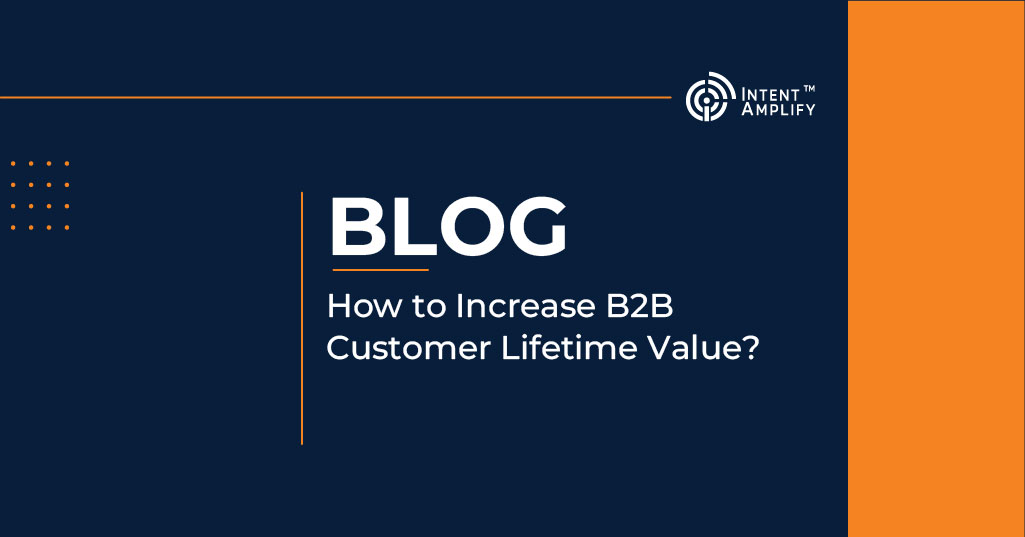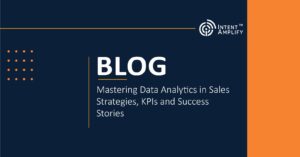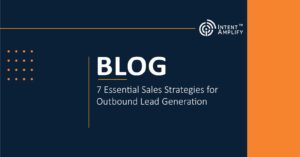
How to Increase B2B Customer Lifetime Value?
Companies spend a fortune to acquire customers. Acquiring customers is the hardest task but without retention, you are not going to get the optimum value from a single customer. To make it more clear the B2B Customer lifetime value (C.L.V) is directly proportional to ROI. Prioritizing loyal customer acquisition and fostering repeat business is crucial. This necessitates a comprehensive evaluation of the B2B Customer Lifetime Value (CLV) metric, ensuring sustained profitability and enduring client partnerships.
What is customer lifetime value in B2B?
The B2B Customer Lifetime Value (CLV) metric is a key indicator, projecting the revenue anticipated from a specific B2B customer throughout the partnership. It considers both, initial acquisition and ongoing retention costs.
CLV as a Predictive Tool
This metric unveils two aspects: the ‘actual’ value and the ‘potential’ growth trajectory of the business relationship. It serves as a predictive tool, leveraging data analytics to forecast the future value derived from customer engagements. CLV isn’t a fixed figure; its calculation varies across businesses.
The CLV Formula
However, a fundamental formula considers the gross contribution per customer, yearly retention rate, and the expected length of the relationship:
CLV = (Gross contribution per customer) x (Yearly retention rate / 1 + Yearly discount rate – Yearly retention rate)
B2B vs B2C CLV
While widely used in B2C industries like retail and telecommunications, CLV is even more critical for B2B entities, often translating into substantial value per account. B2B CLV strategies often rely on executive judgment and experience due to the smaller customer base, differing from the statistical approach prevalent in B2C companies with larger and more diverse customer volumes.
Customer Lifetime Value Segments
Diverse customer behavior shapes their CLV. Some maintain consistent purchases, ensuring a high CLV, while others engage infrequently, resulting in a lower CLV.
Understanding why some customers don’t make repeat purchases aids in refining sales techniques for increased loyalty, higher CLV, and amplified revenue. Alternatively, focusing efforts on high-CLV groups might be more strategic. Segmentation becomes crucial when customer groups vary in buying patterns. Additionally, creating segments based on discount structures or geographic differences, like overseas shipping costs, refines CLV calculations.
For optimal strategies, understanding CLV across segments is key. This knowledge guides resource allocation, highlighting areas where marketing efforts might be misdirected toward fluctuating-value new customers instead of nurturing high-value, long-term relationships.
4 Best practices to increase Customer lifetime value (C.L.V)
The Average Revenue Per User (ARPU) is calculated by dividing the total revenue by the number of customers within a specific timeframe. If this timeframe represents a month, multiplying it by 12 reveals the annual value. To ascertain the B2B Customer Lifetime Value (CLTV), estimate the anticipated duration of retaining a customer. This tenure, combined with the ARPU, delineates the CLTV.
1:- Make the Onboarding Experience Seamless
The initial encounter a customer has with your product happens during the onboarding phase, a pivotal aspect of ensuring customer success. Shockingly, following sign-up, around 40-60 percent of customers fail to engage with the product. Hence, the onboarding experience becomes vital, serving as the bridge between the trial phase and signing up for a recurring subscription.
Developing an onboarding process involves mapping out crucial user touchpoints, each with a clear purpose and significance. The smoother the journey, the better, but overlooking critical steps can be detrimental. Wes Bush, the Product-Led Institute founder, likens this process to a bowling alley, with the end goal as the pins users need to reach.
The ‘conversational’ and ‘product’ bumpers act as guides along this alley. The conversational bumper includes pivotal touchpoints, automated or manual, while the product bumper might involve in-app tours or tips. Rapidly showcasing the product’s benefits is essential; a lengthy onboarding period can lead to user frustration and eventual departure.
2:- Give Them the Value
For too long, Customer Success took a back seat in B2B SaaS companies, but now, it’s gaining ground. This concept empowers firms to define what success means for their customers and how they’ll facilitate it post-onboarding.
Boaz Maor, a customer success advisor, advocates a ‘customer-first’ approach, emphasizing value-driven solutions. McKinsey outlines five critical facets for effective customer success:
-
- Unified go-to-market strategy with a focus on customer success.
- Sustainable funding model aligned with customer success outcomes.
- Talent and capabilities to oversee customer journeys.
- Advanced analytics for predictive insights and change management.
- Cultivating a customer-centric organizational culture.
3:- Think Twice about the Service Renewal Rate
Relying on recurring revenue is fantastic, but sometimes, renewals fall through. Customers may opt not to renew (voluntary churn) or unintentionally leave (involuntary churn).
Several reasons drive non-renewals: unmet benefits expectations, insufficient product usage or necessity, or payment issues like failed card renewals.
Understanding these reasons is crucial—to act upon them.
But, don’t lose hope! There are myriad ways to enhance renewal rates and bolster your B2B Customer Lifetime Value (CLTV).
Engaged and satisfied customers are more likely to renew subscriptions. Maintain their engagement by sharing timely emails with useful tips, tricks, and highlights of their benefits throughout the year.
4:- Make Your Customer Attached to you
In our current screen-bound world, cultivating deep connections holds immense value. Feeling understood and recognized carries a profound significance.
The desire to be more than just a statistic resonates universally. Individuals seek personal recognition rather than being a mere figure in the crowd. This sentiment rings true not only for consumers but also for business buyers—who, behind company names, are individuals seeking acknowledgment.
Personal connections offer invaluable insights. Leveraging these relationships ensures tailored solutions that precisely meet their needs.
Conclusion
Surprisingly, statistics reveal insufficient focus on retention and CLTV, leading to compensating churn through costlier acquisition methods.
Thankfully, bolstering user retention and elevating individual revenue isn’t as challenging as it seems.
Effective onboarding, intentional customer success initiatives, and personalized experiences yield significant results. Additionally, implementing upselling, cross-selling, and enhancing renewal rates are readily achievable strategies, all poised to elevate your CLTV.




